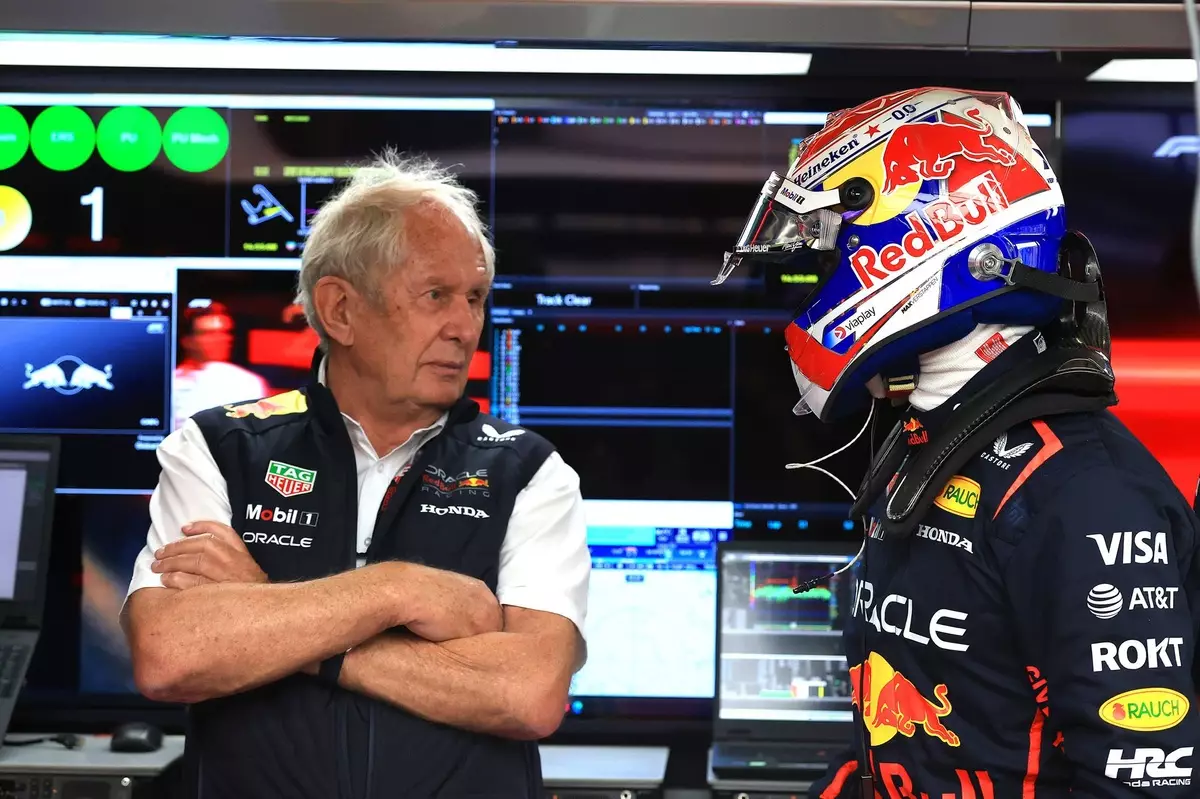In the high-octane world of Formula 1, few moments can alter the course of a race like a botched restart. At the recent Spanish Grand Prix, Max Verstappen’s choices during the final laps not only challenged his judgment but also sent shockwaves through his team, Red Bull Racing. Helmut Marko, the team’s astute advisor, expressed astonishment over Verstappen’s decision-making during these chaotic moments, suggesting we were witnessing not just a racer’s blunder, but a critical turning point that could have ramifications for the season ahead.
As the safety car came in on lap 61, the tension on the track became palpable. Verstappen, who had been holding third place, lost his position to Charles Leclerc. This strategic move by Leclerc seemed to ignite a spark of frustration in Verstappen, setting off a cascade of events that culminated in a collision with George Russell. Interestingly, Marko pointed out that the incident with Leclerc initiated a series of lapses in judgment, narrowing down to Verstappen’s perception of control and the consequences that followed.
Friction on the Track
The opening act of chaos wasn’t merely confined to the reshuffling of positions; it escalated into direct confrontations. Marko noted that Verstappen was fully aware of the regulations, indicating a deeper understanding of what was at stake. He stated, “Max knows the regulations in detail,” which prompts a thought-provoking question: if he was aware, why did he engage in behavior that led to fractures rather than unity on the track?
Moreover, the clash of philosophies between Verstappen and Russell is not new. Their past encounters have already painted a picture of rivalry, heightened by competitive spirits on a limited asphalt canvas. The subsequent incident, where it appeared that Verstappen was momentarily yielding to Russell but then accelerated unexpectedly, raises eyebrows. Could it be that in such high-stress situations, even seasoned drivers allow adrenaline and emotions to cloud their better judgment? This instance suggests not merely lapses in strategy but fundamental questions about how competitors cope under pressure.
The Fallout: Penalties and Protests
Verstappen’s actions did not go unnoticed by the race stewards, who penalized him with a ten-second time reduction along with three penalty points, putting the reigning world champion perilously close to a potential race ban. Marko’s reaction, lauding the penalty while sensing that Verstappen’s moment of madness was more than just his own doing, reflects the complexity and nuance of race day dynamics.
It’s fascinating to consider how quickly competitive fervor can turn to regret. The apology issued by Verstappen on social media, wherein he termed his actions “not right,” exemplifies the internal conflict that enshrouds elite athletes. How much of that statement was motivated by genuine remorse, and how much by the hard reality of slumping in the standings? It is a conundrum faced not only by Verstappen himself but by the entire world of competitive racing.
The Psychological Landscape of Racing
What this incident truly underscores is the intricate interplay of psychology and strategy in racing. Unlike other sports, where players can reset or regroup frequently, F1 combines strategy, risk, and real-time decision-making at breakneck speeds. The chaos that unfolded serves as a reminder that even the most skilled drivers can find themselves in distressing emotional states, particularly when immediate penalties loom as a result of their choices.
Marko’s observation that “emotions simply got the better of him” speaks volumes about the pressures these athletes endure. Perhaps there is an unresolved tension that needs to be unpacked. As Verstappen navigates his racing career, understanding and managing these pressures will be essential not only for his success but for the larger narrative of his evolving legacy in the sport.
As the dust settles on another dramatic race, the broader implications for Verstappen and Red Bull Racing, as well as the lessons learned from chaos and misjudgment, are yet to fully unfold. The Spanish GP was not just an adrenaline-fueled race; it was a pivotal chapter in understanding the complexity of human behavior in high-stakes competition.

